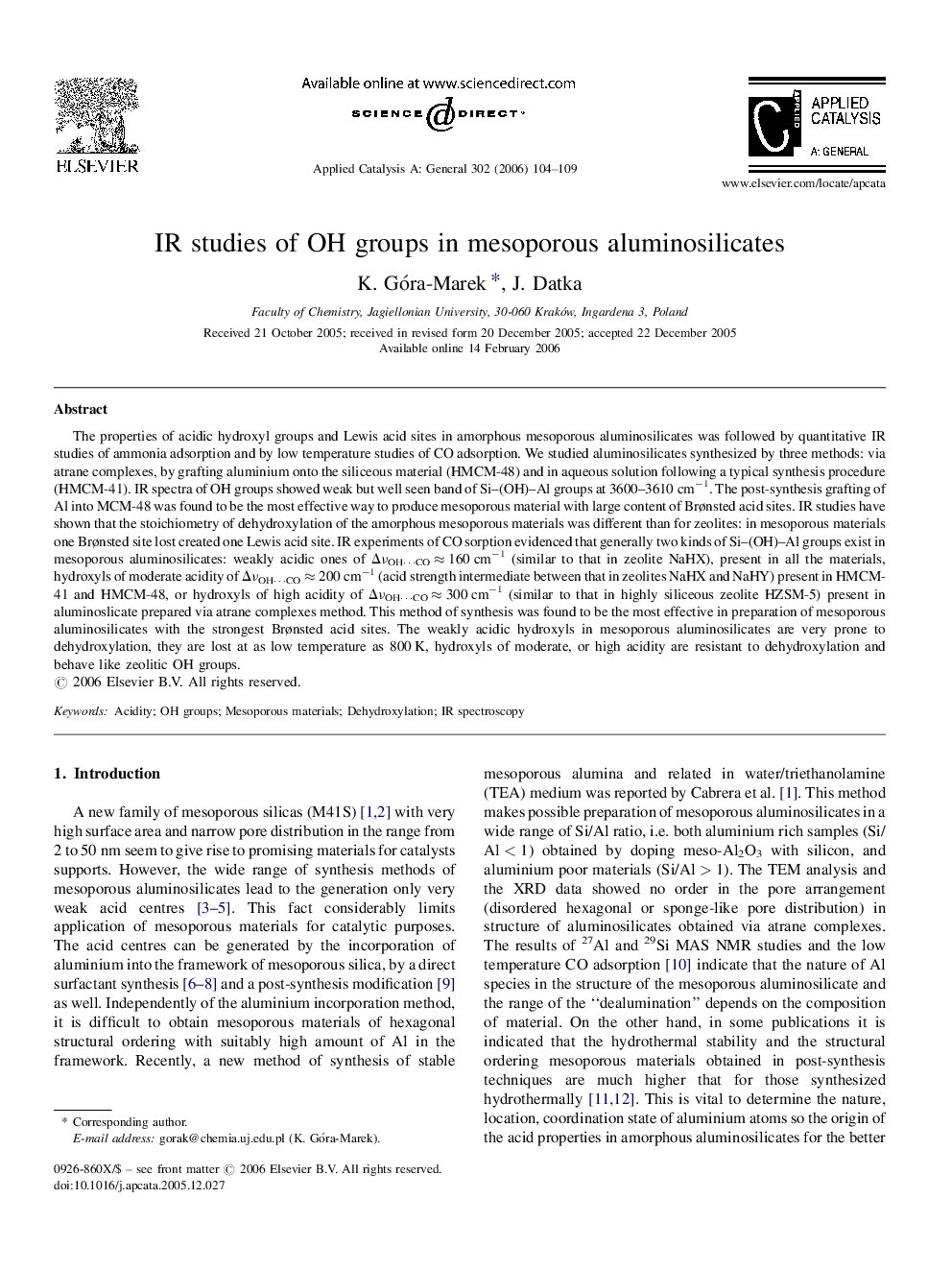| کد مقاله | کد نشریه | سال انتشار | مقاله انگلیسی | نسخه تمام متن |
|---|---|---|---|---|
| 43884 | 45993 | 2006 | 6 صفحه PDF | دانلود رایگان |

The properties of acidic hydroxyl groups and Lewis acid sites in amorphous mesoporous aluminosilicates was followed by quantitative IR studies of ammonia adsorption and by low temperature studies of CO adsorption. We studied aluminosilicates synthesized by three methods: via atrane complexes, by grafting aluminium onto the siliceous material (HMCM-48) and in aqueous solution following a typical synthesis procedure (HMCM-41). IR spectra of OH groups showed weak but well seen band of Si–(OH)–Al groups at 3600–3610 cm−1. The post-synthesis grafting of Al into MCM-48 was found to be the most effective way to produce mesoporous material with large content of Brønsted acid sites. IR studies have shown that the stoichiometry of dehydroxylation of the amorphous mesoporous materials was different than for zeolites: in mesoporous materials one Brønsted site lost created one Lewis acid site. IR experiments of CO sorption evidenced that generally two kinds of Si–(OH)–Al groups exist in mesoporous aluminosilicates: weakly acidic ones of ΔνOH⋯CO ≈ 160 cm−1 (similar to that in zeolite NaHX), present in all the materials, hydroxyls of moderate acidity of ΔνOH⋯CO ≈ 200 cm−1 (acid strength intermediate between that in zeolites NaHX and NaHY) present in HMCM-41 and HMCM-48, or hydroxyls of high acidity of ΔνOH⋯CO ≈ 300 cm−1 (similar to that in highly siliceous zeolite HZSM-5) present in aluminoslicate prepared via atrane complexes method. This method of synthesis was found to be the most effective in preparation of mesoporous aluminosilicates with the strongest Brønsted acid sites. The weakly acidic hydroxyls in mesoporous aluminosilicates are very prone to dehydroxylation, they are lost at as low temperature as 800 K, hydroxyls of moderate, or high acidity are resistant to dehydroxylation and behave like zeolitic OH groups.
Journal: Applied Catalysis A: General - Volume 302, Issue 1, 21 March 2006, Pages 104–109